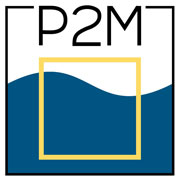
None of us expects to eat only birds that are shot as they fly over the Maltese Islands or cattle lassoed while running wild on the prairies of North and South America. We take it for granted that all the birds and animals that we eat are farmed. Whether this is intensive or free range, it is all still farming.
We understand that anything else, given population levels and diminishing stocks in the wild, would be impractical and lead to widespread hunger. We also know that it would be detrimental to wildlife by depleting wild stocks. In fact, many of those most virulently opposed to fish farming also campaign for the protection of life in the wild.
World stocks of fish in the wild have been decimated since 1950, mainly due to an increased fishing effort. According to the Food and Agriculture Organisation (FAO), between 80 and 90 million tonnes of fish have been caught each year since the mid-1980s, but this is due to pushing the boundaries of the ocean’s fish stocks. Specifically, the marine capture industry has been targeting less desirable species, fishing further offshore, and harvesting smaller fish than ever before.
On the other end of the scale, every person alive on this planet needs to eat fish to develop and function properly, and per capita fish consumption has also increased, from 10 kg in the 1960s to over 19 kg in 2012 (FAO, 2014). Fishing on a scale that would bring fish to even a mere fraction of the world’s population, set to top 9 billion by 2050 and 10 billion by 2100, would entail devastation on a massive scale. Natural fish stocks have long since sunk below replacement levels because there are too few fish left to breed at a sufficient rate to restock the seas and oceans.

Aquaculture and capture fisheries production in millions of tonnes from 1950-2012 (Source: FAO, 2014)
The natural solution is fish farming, and this was why the method was developed: to farm fish just like we farm cattle, chickens, turkeys and other livestock – to ensure that supply continues to meet the growing demand.